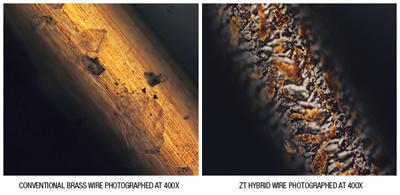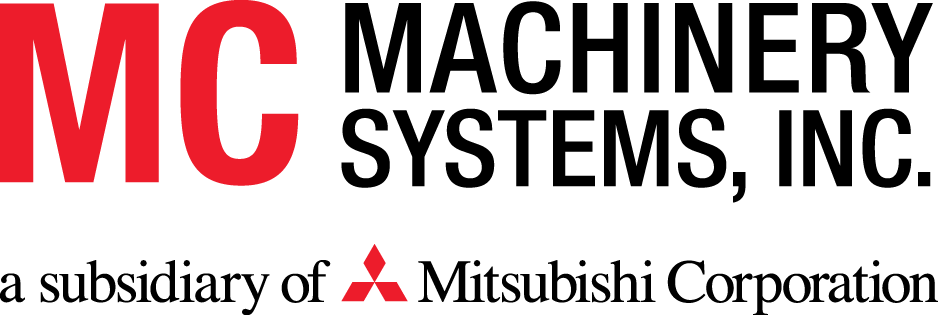
MC Machinery Systems, a wholly owned subsidiary of Mitsubishi Corp., announces the release of its ZT Hybrid Wire for EDMing. The hybrid wire features a baked-on external zinc layer for maximum speed (average 30 percent higher than conventional brass wire), superior accuracy, surface finish and clean cutting.
"Users will notice a difference the very first time they use ZT Hybrid Wire," Scott Watton, Product Manager, Consumable Products Group at MC Machinery Systems said. "Water is everything in EDM and this wire is built to take full advantage of its properties to do everything better … cut, clean, cool and so on."
The baked-on zinc coating forms microscopic, precision pockets on the wire's surface that allow more water to integrate in to the cutting process. The extra water allows for maximum spark energy for faster, more accurate cutting as well as finer finishes. The added texture also gets water closer to the brass core allowing for more efficient off-time cooling, minimizing the risk of electrode breakage.
The baking process adheres the outer zinc layer to the wire's brass base better than conventional coating. This strong bond makes ZT Hybrid Wire more resistant to flaking, resulting in a cleaner cutting process that can reduce machine tool maintenance and extend its life.
The ZT Hybrid Wire is available in hard and soft versions, P2 through P15 and K125 through K250 size spools. It's also backed by MC Machinery's Consumable Products Groups replacement guarantee.
Contact Details
Related Glossary Terms
- baking
baking
1. Heating to a low temperature to remove gases. 2. Curing or hardening surface coatings, such as paints, by exposure to heat. 3. Heating to drive off moisture, as in the baking of sand cores after molding. Often used after plating or welding, or when the presence of hydrogen is suspected, to prevent embrittlement.
- electrical-discharge machining ( EDM)
electrical-discharge machining ( EDM)
Process that vaporizes conductive materials by controlled application of pulsed electrical current that flows between a workpiece and electrode (tool) in a dielectric fluid. Permits machining shapes to tight accuracies without the internal stresses conventional machining often generates. Useful in diemaking.

